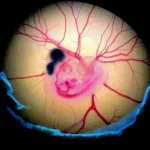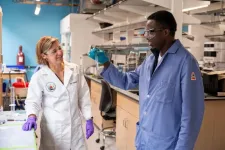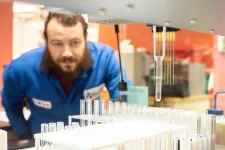(Press-News.org)
Leuven, 14 February 2025 – In a new study published in Science, a Belgian research team explores how genetic switches controlling gene activity define brain cell types across species. They trained deep learning models on human, mouse, and chicken brain data and found that while some cell types are highly conserved between birds and mammals after millions of years of evolution, others have evolved differently. The findings not only shed new light on brain evolution; they also provide powerful tools for studying how gene regulation shapes different cell types, across species or different disease states.
Our brain, and by extension our entire body, is made up of many different types of cells. While they share the same DNA, all these cell types have their own shape and function. What makes each cell type different is a complex puzzle that researchers have been trying to put together for decades from short DNA sequences that act like switches, controlling which genes are turned on or off. The fine-tuned regulation of these switches ensures that each type of brain cell uses just the right genetic instructions from the genome to perform its unique role. Scientists refer to the unique patterns of these genetic switches as a regulatory code.
AI to crack the code
Prof. Stein Aerts and his team at VIB.AI and the VIB-KU Leuven Center for Brain & Disease Research study the fundamental principles of this regulatory code, and how it may impact diseases such as cancer or brain disorders. They develop deep learning methods to help make sense of the huge amount of information on gene regulation they gather from thousands and thousands of individual cells.
“Deep-learning models working with the DNA sequence code have helped us enormously to identify regulatory mechanisms across different cell types,” explains Aerts. “Now, we wanted to explore whether this regulatory code could also inform us on how these cell types are conserved across species.”
One example of where such a question is highly relevant is in the brain. Despite shared developmental trajectories, the brains of mammals and birds display a strikingly different neuroanatomy. Aerts and his team have now applied deep learning models to assess whether the existing differences and similarities are reflected in shared or divergent regulatory codes.
Tool to study evolution
Nikolai Hecker and Niklas Kempynck, respectively postdoc and PhD student in the Aerts lab, developed and implemented machine learning models to characterize and compare different types of cells across human, mouse, and chicken brains, covering approximately 320 million years of evolution. But before they could truly compare, they first had to better understand the cell type composition of the chicken brain, so they created a comprehensive transcriptomic atlas.
“Our study demonstrates how we can use deep learning to characterize and compare different cell types based on their regulatory codes,” explains Hecker. “We can use these codes to compare genomes of different species, identify which regulatory codes have been evolutionarily preserved, and gain insights into how cell types have evolved.”
The team found that while some regulatory cell type codes are highly conserved between birds and mammals, others have evolved differently. Notably, the regulatory codes for certain bird neurons resemble those of deep-layer neurons in the mammalian neocortex.
“Looking directly at the regulatory code presents a significant advantage,” adds Kempynck, “It can tell us which regulatory principles are shared across species, even if the DNA sequence itself has changed.”
Tool to study disease
This regulatory information is useful beyond understanding evolution. In previous work, Aerts and his team already verified that regulatory codes for melanoma (skin cancer) cell states are conserved between mammals and zebrafish. They also identified variants in the genomes of melanoma patients. The models presented in the current study on brain cell types provide useful tools to study the impact of genomic variants and their association with mental or cognitive traits and disorders.
Aerts: “Ultimately, models that learn the genomic regulatory code hold the potential to screen genomes and investigate the presence or absence of specific cell types or cell states in any species. This would be a powerful tool to study and better understand disease.”
To the zoo
Aerts and his team are already applying their models on both fronts, he says:
“In collaboration with Zoo Science and Wildlife Rescue Center, we are now expanding our evolutionary modeling to many more animal brains: different types of fish to dear, hedgehogs and capibaras. At the same time, we’re also exploring how these AI models can help to unravel genetic variation linked to Parkinson’s disease.”
END
The pallium is the brain region where the neocortex forms in mammals, the part responsible for cognitive and complex functions that most distinguishes humans from other species. The pallium has traditionally been considered a comparable structure among mammals, birds, and reptiles, varying only in complexity levels. It was assumed that this region housed similar neuronal types, with equivalent circuits for sensory and cognitive processing. Previous studies had identified the presence of shared excitatory and inhibitory neurons, as well as general connectivity patterns suggesting a similar evolutionary path in these ...
Images
EAST LANSING, Mich. – Tropical forests are massive biodiversity storehouses. While these rich swathes of land constitute less than one-tenth of Earth’s surface, they harbor more than 60% of known species. Among them is a higher concentration of endangered species than anywhere else on Earth.
However, these regions are also under immense pressure, as tropical land is rapidly being transformed for industrial and agricultural purposes.
Worldwide, regional governments and international groups are establishing new protected areas to slow further loss of threatened species. However, new research appearing in the journal PLOS Biology demonstrates ...
HOUSTON ― Using a new technology and computational method, researchers from Fred Hutch Cancer Center and The University of Texas MD Anderson Cancer Center have uncovered a biomarker capable of accurately predicting outcomes in meningioma brain tumors and breast cancers.
In the study, published today in Science, the researchers discovered that the amount of a specific enzyme, RNA Polymerase II (RNAPII), found on histone genes was associated with tumor aggressiveness and recurrence. Hyper-elevated levels of RNAPII on these histone genes indicate cancer over-proliferation and potentially contribute to chromosomal changes. These findings point to the use of a new genomic technology as ...
Irvine, Calif., Feb. 13, 2025 — Among the roughly 10 billion white dwarf stars in the Milky Way galaxy, a greater number than previously expected could provide a stellar environment hospitable to life-supporting exoplanets, according to astronomers at the University of California, Irvine.
In a paper published recently in The Astrophysical Journal, a research team led by Aomawa Shields, UC Irvine associate professor of physics and astronomy, share the results of a study comparing the climates of exoplanets at two different stars. One is a hypothetical white dwarf that’s passed through much of its life cycle and is on a slow path ...
Researchers at Baylor College of Medicine, the Jan and Dan Duncan Neurological Research Institute (Duncan NRI) at Texas Children's Hospital, Baylor Genetics and collaborating institutions provided a long-awaited and rare genetic diagnosis in a child with Lennox-Gastaut syndrome, a type of developmental epileptic encephalopathy (DEE), associated with a severe, complex form of epilepsy and developmental delay.
Their recent study reports that a highly complex rearrangement of fragments from chromosomes 3 and 5 altered the typical organization of genes in the q14.3 region of chromosome ...
Mustard gas, also known as sulfur mustard, is one of the most harmful chemical warfare agents, causing blistering of the skin and mucous membranes on contact. Chemists at Washington University in St. Louis have been awarded a $1 million contract with the Defense Threat Reduction Agency (DTRA) to develop a new way to detect the presence of this chemical weapon on the battlefield.
As with many chemical threats, quick identification of sulfur mustard is key to minimizing its damage, according to Jennifer Heemstra, the Charles Allen Thomas Professor of Chemistry in Arts & Sciences and principal investigator of the new DTRA grant.
“It’s ...
Neuroscientists have new insights into why previous experiences influence future behaviors. Experiments in mice reveal that personal history, especially stressful events, influences how the brain processes whether something is positive or negative. These calculations ultimately impact how motivated a rodent is to seek social interaction or other kinds of rewards.
In a first of its kind study, Tufts University School of Medicine researchers demonstrate that interfering with the neural circuits responsible ...
Lithium nickel oxide (LiNiO2) has emerged as a potential new material to power next-generation, longer-lasting lithium-ion batteries. Commercialization of the material, however, has stalled because it degrades after repeated charging.
University of Texas at Dallas researchers have discovered why LiNiO2 batteries break down, and they are testing a solution that could remove a key barrier to widespread use of the material. They published their findings online Dec. 10 in the journal Advanced Energy Materials.
The team plans first to manufacture LiNiO2 batteries in the lab and ...
WASHINGTON — The Society for Neuroscience (SfN) has selected 10 members from a highly competitive applicant pool to participate in the Society’s annual Capitol Hill Day on March 11–13, 2025. The 10 Early Career Policy Ambassadors (ECPAs), representing many career stages and geographic locations, were chosen for their dedication to advocating for the scientific community, their desire to learn more about effective means of advocacy, and their experience as leaders in their labs and community.
The ambassadors are:
Izan Chalen, University of Illinois Urbana-Champaign
Nicole D’Souza, University of California, Riverside
Lana Ruvolo Grasser, PhD, Department ...
Collecting video data is the long-established way biologists collect data to measure the behaviour of animals and humans. Videos might be taken of human subjects sitting in front of a camera while eating in a group in the University of Konstanz, or researchers using cameras to measure how often house sparrow parents visit their nests on Lundy Island, UK. All these video datasets have one thing in common: after collecting them, researchers need to painstakingly watch each video, manually mark down who, where and when each behaviour of interest happens—a process known as “annotation”. ...



